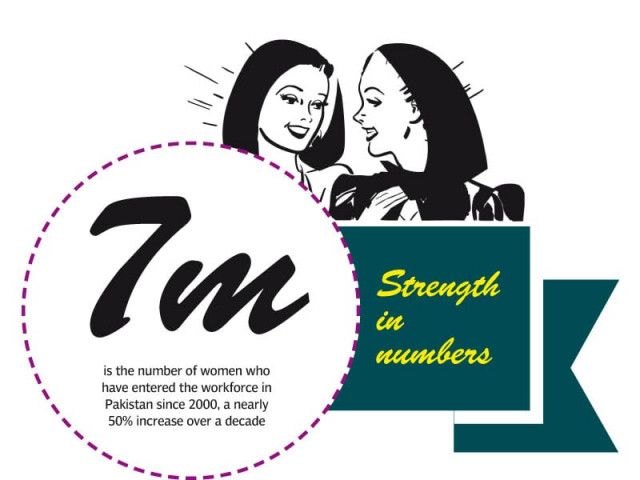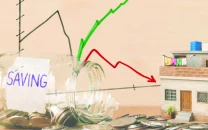Social revolution: Rising economic power of Pakistani women
As more women enter the workforce, they are beginning to make the economy a more inclusive place.

Social revolution: Rising economic power of Pakistani women
In what is likely to be the single most transformative trend in Pakistani society, it is becoming increasingly clear that Pakistani women are becoming more active participants within the economy, a fact that many commercial enterprises have already noticed and accounted for in their business strategies.
In a special report this week, The Express Tribune takes a look at the rising power of the Pakistani female consumer, as well as her impact on the Pakistani economy. (And we apologise at the outset for the irony of having this special report be written entirely by a team of male reporters.) We will examine some of the possible causes for why more women are entering the workforce, as well as how businesses are taking into account the fact that the purchasing decision-making authority of Pakistani women has expanded far beyond the stereotypical realm of the kitchen.
First, some of the numbers: according to the 2011 Pakistan Employment Trends Report, compiled by the Pakistan Bureau of Statistics, female labour force participation has jumped from 16.3% in 2000 to 24.4% in 2011. That jump represents an extra seven million women in the work force.
So who are these women? There is very little specific research on the profiles of women who have entered the workforce, but the 2012 Economic Survey of Pakistan, issued by the federal finance ministry, states that a major proportion of the rise appears to be taking place in urban areas. The government does not break down employment data by specific sectors or levels, but it appears – at least from anecdotal evidence – that women are entering the workforce, to varying degrees, at most levels and virtually all sectors.
Their reasons for joining the workforce have also not been documented in detail, but there are at least a few statistics that provide hints about their motivations. Education levels appear to be rising across the board, and fertility rates are hitting an all-time low virtually every year. Pakistani women are better educated and are less burdened with child-care than at any time in history (much more than men, but less than their predecessors a generation ago.)
Another factor appears to be need: according to The Express Tribune’s analysis of data provided by the Household Integrated Economic Survey, the bottom 20% of households in Pakistan have not seen their incomes keep pace with inflation. Many patriarchal households have had to abandon their traditionalist strictures against women working outside the home and let their female relatives work to bring in more income.
Seven million women is not a number to be trifled with: while women have yet to crack the glass ceiling in Pakistan (representation at senior levels of management remains shamefully low), they are beginning to gain increasing economic clout. And this increased clout is changing the way business is done in Pakistan, largely by making it more inclusive than it used to be.
Many companies, for instance, have caught on to the idea that female customers have money to spend, but may not necessarily be comfortable speaking to male salespersons, regardless of how friendly or courteous they may be. That, in turn, has led to the rise in hiring of female staff members, creating stable corporate-style employment opportunities for blue-collar women. The rising spending power of upper-middle class women is helping their lower-middle and working class sisters get jobs.
It is also perhaps not a coincidence that the first Pakistani law against sexual harassment in the workplace was passed in 2011. Perhaps politicians now feel that urban women are an increasingly important electoral constituency.
And the rise in female consumers has also given birth to a new breed of female entrepreneurs in Pakistan. This is a game being played not just by the daughters of rich businessmen, but also by more working class women, aided by government efforts like the incubation centres set up by the Punjab government in Lahore, and the state-owned First Women’s Bank providing lending facilities.
There is a lot of analysis that needs to be done about the rising economic power of Pakistani women, and we hope to provide a start with this special report. One thing is for certain: Pakistani women are already changing this economy for the better.
Published in The Express Tribune, November 12th, 2012.



















COMMENTS
Comments are moderated and generally will be posted if they are on-topic and not abusive.
For more information, please see our Comments FAQ